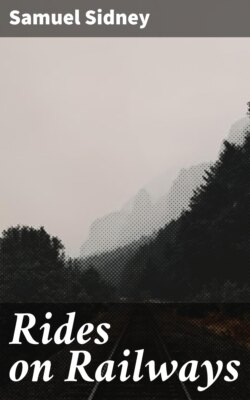Читать книгу Rides on Railways - Samuel Sidney - Страница 10
На сайте Литреса книга снята с продажи.
AYLESBURY.
ОглавлениеTable of Contents
Aylesbury, standing on a hill, in the midst of one of the richest, if not the richest, tracts of pasture lands in England, is very ancient without being venerable. The right of returning two members to Parliament is found periodically profitable to the inhabitants, and these two MP’s with a little lace, constitute its only manufactures. The loss of the coaching trade by the substitution of the railroad, was a great blow to its local prosperity.
Among other changes, the Aylesbury butchers often go to London to buy meat, which has passed in the shape of oxen through the town to ride to London.
The Berry field, said to be the best field in England, lies in the Vale of Aylesbury. The saying of “good land bad farmers,” is not belied among the mass of those who meet in the markets of Aylesbury. With a few exceptions the farming is as bad as it can be, the farmers miserably poor, and the labourers ignorant to a degree which is a disgrace to the resident clergy and gentry. We had some experience of the peasantry during the railway surveys of 1846, 1847, and found them quite innocent of thinking and reading, with a timid hatred of their employers, and perfect readiness to do anything not likely to be found out, for a pot of beer. They get low wages, live low, and work accordingly. It was round Aylesbury, that for many years, the influence of the insolvent Duke of Buckingham was paramount.
To city sportsmen, Aylesbury has interest as the centre of Baron Rothschild’s (stag) hunt; to politicians, because of great meetings of the country party held there.
We must not omit to notice the duck trade carried on by the poorer order of people round the town. They hatch the ducks under hens generally in their living rooms, often under their beds, and fatten them up early in spring on garbage, of which horse flesh not unfrequently forms a large part. The ducks taste none the worse if for the last fortnight they are permitted to have plenty of clean water and oats, or barleymeal. Most of the Aylesbury ducks never see water except in a drinking pan. The cheap rate at which the inferior grain can be bought has been a great advantage to these duck feeders.
The many means now open of reaching the best markets of the country will probably change the style and make the fortunes of a new race of Bucks farmers. Those of the present generation who have neither capital nor education can only be made useful by transplantation.
Returning from Aylesbury, and gliding out of the deep cuttings over a fine open country, we approach the Leighton Buzzard station, and see in the distance the lofty octagonal spire of the Leighton Buzzard church.
The town is half a mile from the station, and commands the attention of the church antiquary from its fine church and cross.
The church, says a very competent authority on such matters, “is one of the most spacious, lightsome, and well-proportioned perpendicular churches, cruciform, with a handsome stone spire. The roof, stalls, and other wood-work very perfect. The windows, some ironwork, and other details, full of interest.”
The cross stands in an open area in the centre of the market place, and is twenty-seven feet high above the basement, which is raised by rows of steps about five feet.
At Leighton Buzzard a branch line of seven miles communicates with DUNSTABLE.
Dunstable is situated in the centre of the Dunstable Chalk Downs, where the celebrated Dunstable larks are caught which are made mention of in one of Miss Edgeworth’s pretty stories. The manufactures are whiting and straw hats. Of an ancient priory, founded in 1131, by Henry I., and endowed with the town, and the privileges of jurisdiction extending to life and death, nothing remains but the parish church, of which the interior is richly ornamented. Over the altar-piece is a large painting representing the Lord’s Supper, by Sir James Thornhill, the father-in-law of Hogarth. In a charity school founded in 1727, forty boys are clothed, educated, and apprenticed. In twelve almshouses twelve poor widows are lodged, and in six houses near the church, called the Maidens’ Lodge, six unmarried gentlewomen live and enjoy an income of £120 per ann. With this brief notice we may retrace our steps.
On leaving Leighton, within half a mile we enter a covered tunnel, and we strongly recommend some artist fond of “strong effects” in landscape to obtain a seat in a coupé forming the last carriage in an express train, if such are ever put on now, sitting with your back to the engine, with windows before and on each side, you are whirled out of sight into twilight and darkness, and again into twilight and light, in a manner most impressive, yet which cannot be described. Perhaps the effect is even greater in a slow than in an express train. But as this tunnel is curved the transition would be more complete.
At Bletchley the church (embowered in a grove of yews, planted perhaps when Henry VIII. issued his decrees for planting the archer’s tree) contains an altar tomb of Lord Grey of Wilton, A.D. 1412. The station has now become important as from it diverge the Bedford line to the east, and the lines to Banbury and Oxford to the west.
A branch connects Bletchley with Bedford 16¼ miles in length, with the following stations:-
FENNY STRATFORD. LIDLINGTON.
WOBURN SANDS. AMPTHILL.
RIDGMOUNT. BEDFORD.
